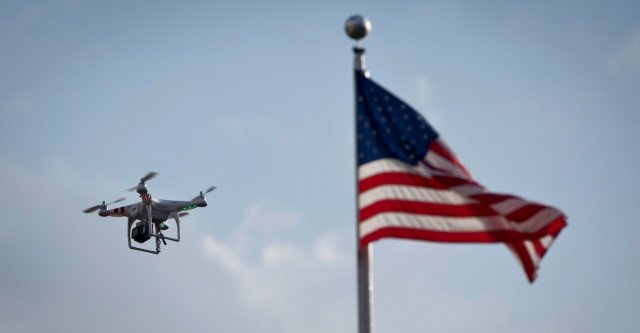| a | |||
|
|
|||
|
World Defense & Security News - United States
|
|||
|
|
|||
|
Trump announces new Pilot Program to expand UAV integration in US airspace
|
|||
|
U.S. President Donald Trump on Wednesday announced a pilot program to expand government and commercial use of drones as well as safely integrating these unmanned aircraft into the nation's airspace. Under a presidential memorandum signed by Trump, the Department of Transportation will enter into agreements with state, local, and tribal governments to establish zones for testing "complex" operations of drones, also known as unmanned aircraft systems.
|
|||
|
|
|||
 (Credit: Carclo Allegri/Reuters/Newscom) (Credit: Carclo Allegri/Reuters/Newscom) |
|||
|
|
|||
|
"America's regulatory framework for aviation is outdated, limiting the integration of drones into the national airspace system and driving American technology companies to seek commercial testing and deployment opportunities overseas," the White House said in a statement.
According to the statement, this program will open the skies for the delivery of life-saving medicines and commercial packages, inspections of critical infrastructure, support for emergency management operations, and surveys of crops for precision agriculture applications. The pilot program will also accelerate testing of currently restricted drone operations such as beyond-visual-line-of-sight flights and flights over people, the statement said. In addition, it will allow testing of new drone traffic management systems, detection and tracking capabilities, counter-drone security operations, and the reliability and security of data links between pilot and aircraft. The program, which would expire in three years, means that Amazon and other U.S. companies are now one step closer to making drone package delivery a reality. In 2016, the former administration of President Barack Obama issued the country's first operational rules for commercial use of drones weighing less than 55 pounds (25 kilograms). The 2016 rules require remote pilots to keep the aircraft within visual sight and prohibit flights over unprotected people on the ground. Meanwhile, operations are only allowed during daylight and drones must stay at least five miles (eight kilometers) from airports and cannot fly faster than 100 miles (161 kilometers) per hour. According to the White House, over one million drone owners have registered with the Federal Aviation Administration during the past two years, and the number of commercial drones are projected to increase fivefold by 2021. The potential economic benefit of integrated unmanned aerial systems into U.S. national airspace is estimated to equal up to 82 billion dollars and create up to 100,000 jobs, according to a statement from the Transportation Department website. In a statement, the Commercial Drone Alliance, a leading industry advocacy group in the United States, said it sees the drone pilot program as "an important step in the right direction." "The Alliance is optimistic that the program will become a model for overcoming some of the hurdles keeping the full potential of commercial drones from being realized," it said. |
|||
















